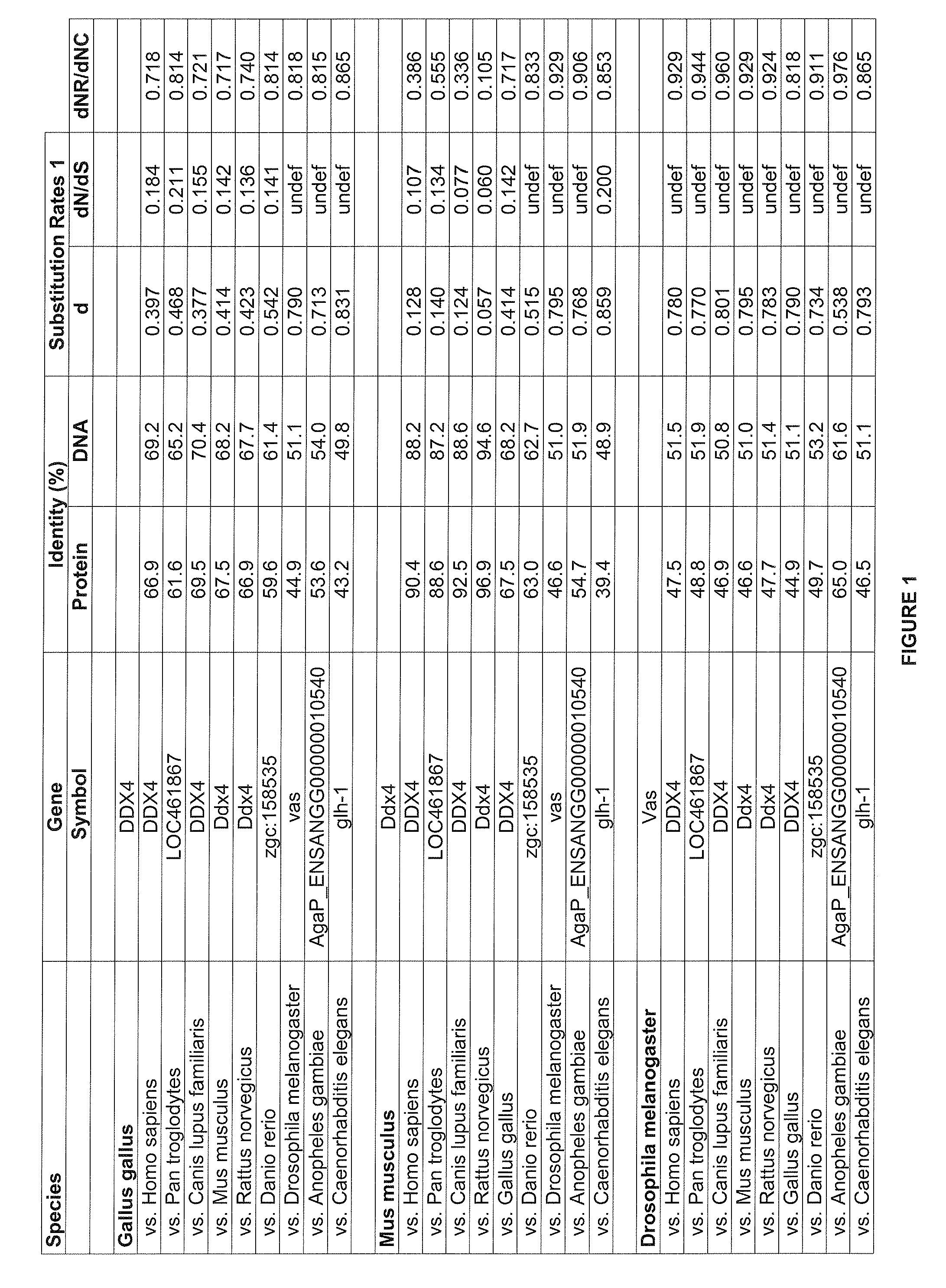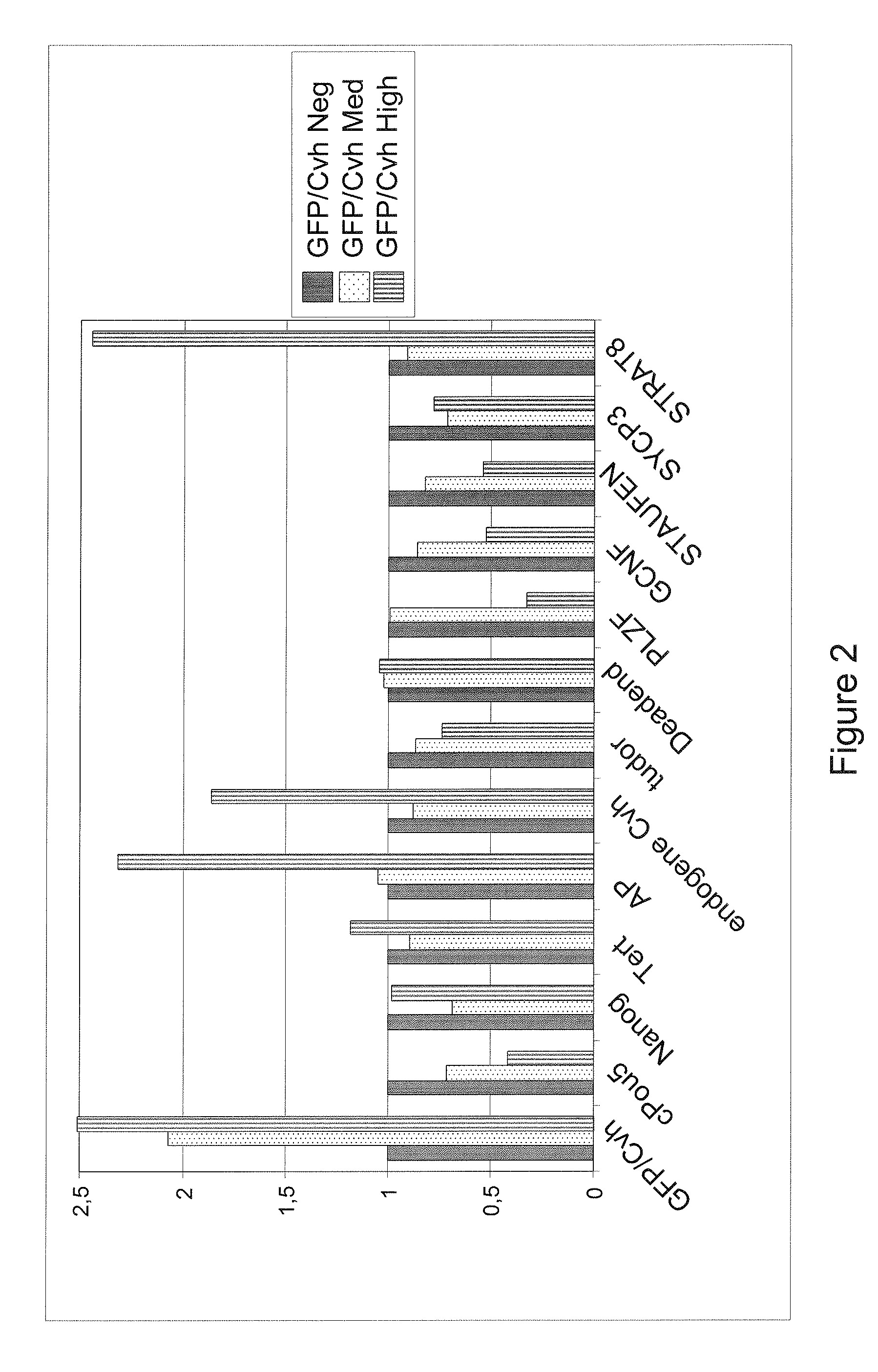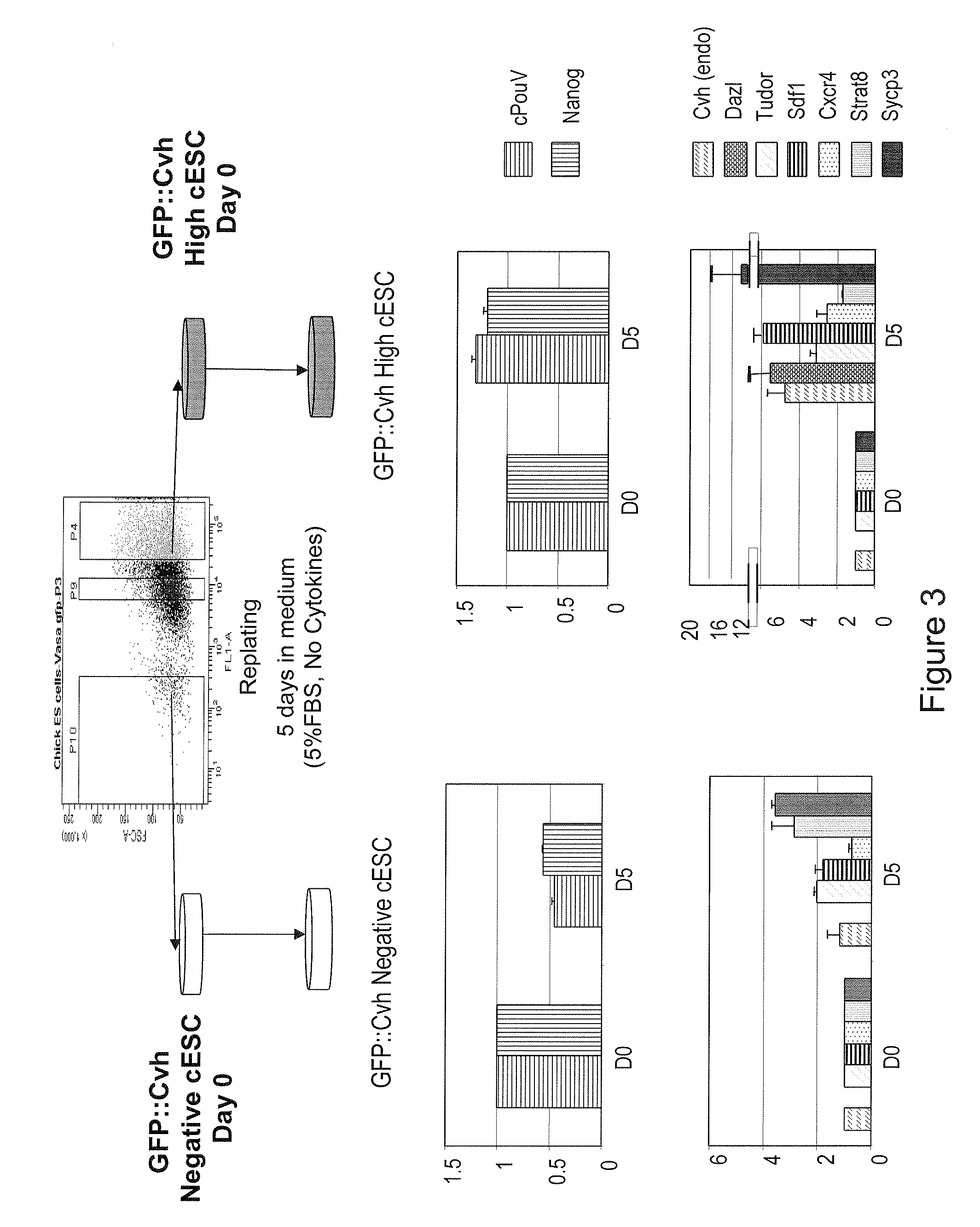Method for reprogramming in vitro stem cells and somatic cells into germinal cells
- Summary
- Abstract
- Description
- Claims
- Application Information
AI Technical Summary
Benefits of technology
Problems solved by technology
Method used
Image
Examples
example 1
Transformation of Chicken Embryonic Stem Cells with a Genetic Construction Comprising a Chicken Vasa Gene and Differentiation of Cells Towards Germinal Cells
[0128]Fertilised eggs from White Leghorn and Red-Naked neck hens were purchased from local breeder and incubated in a humidified incubator at 37° C.
[0129]cESC cells were maintained and transfected in proliferative medium (PM) as described in (Pain et al., 1996; Pain et al., 1999). Stable clones were obtained after daily addition of neomycin at 200 μg / mL for 8 days.
a) Exogenous Expression of Cvh Induced Germcell Associated Gene Expression and a Loss of Pluripotency Associated Gene Expression
[0130]A fusion GFP::Cvh construct was introduced into the cESC. After transfection and drug selection, clones were obtained, pooled and cells FACS sorted (FACS Vantage™ SE Option Diva equipped with a Laser COHERENT® Entreprise™ IIC (488 nm and UV 351-364 nm)). Around 0.5% of cells were highly GFP positive.
[0131]No significant morphological dif...
example 2
Characterization of Germline Cells Obtained after Differentiation of Chicken ES Cells
[0149]a) Injection of cESC into Stage X Embryo
[0150]In order to evaluate the in vivo potential of the GFP::Cvh High cESC, these cells, maintained either in the proliferative medium (PM) or in the differentiation medium (DM) were injected into recipient stage X embryos according to previously described procedure (Pain et al., 1996).
[0151]Recipient embryos were irradiated at 6 Gy (Cobalt source). A small window was made on the lateral part of the egg and shell membrane was removed. 500 to 2000 cells in 1 to 3 μl were injected into the subgerminal cavity using a 20 μl borosilicate micropipette. The window was closed with two layers of shell membrane, reinforced with one piece of Visulin (Hartmann No. 685721 / 3).
[0152]Eggs were incubated for 12-15 days.
[0153]b) GFP::Cvh High cESC are Able to Colonize the Embryonic Gonads with a High Efficiency
[0154]Embryos were incubated for 13 to 15 days and the presenc...
example 3
Concomittant Overexpression of miR34c and Vasa in Chicken ESC
[0167]GFP:Cvh cells are transfected with an expression vector expressing miR34c or as a negative control, pmiR. By over-expressing the miR34c in these cells, an up-regulation of the germinal markers is noticed.
[0168]As previously shown, over-expression of Cvh (Chicken Vasa homologue) in chicken embryonic stem cells (cESC) induces the emergence of germ cell phenotype in these cells (see above).
[0169]On these cells, after over-expression of miR34c, the following aspects can be observed:[0170]a more pronounced expression of the germ cells specific markers (FIG. 5A),[0171]a slight increase in pluripotent markers (cPouv and Nanog),[0172]no modification of the other lineage restricted markers,[0173]an increase in the germ cell markers (FIG. 5B).
[0174]We conclude that miR34-c is acting on the germ cell phenotype by increasing the germ cell differentiation of the cESC transfected with the vasa gene.
PUM
 Login to View More
Login to View More Abstract
Description
Claims
Application Information
 Login to View More
Login to View More - R&D
- Intellectual Property
- Life Sciences
- Materials
- Tech Scout
- Unparalleled Data Quality
- Higher Quality Content
- 60% Fewer Hallucinations
Browse by: Latest US Patents, China's latest patents, Technical Efficacy Thesaurus, Application Domain, Technology Topic, Popular Technical Reports.
© 2025 PatSnap. All rights reserved.Legal|Privacy policy|Modern Slavery Act Transparency Statement|Sitemap|About US| Contact US: help@patsnap.com



